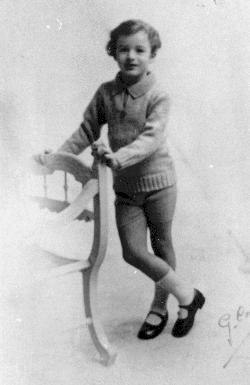
Figure 1.--Small European boys often wore stap shoes during the 1920s-40s with white socks for both play and dressy occasions. |

Considerable variations in usage occurred in different countries. Interesingly, major differences are observeable even in countries where boys wore rather similar clothing. Conventions for starp shoes have changed overtime as well as their popularity in different countries. They were widely worn in America, but were even more common in several European countries. The chronology, gender, age, and convebntions for these shoes have varied significantly from country to country. They may be most associated with English boys becise of A.A. Milne's Christopher Robin (and in recent years Disney). They were widely worn, however, in several other countries.
Trends in Canada concerning strap shoes seem similar to England and America. here this seems to have varied by century. Trends in the 19th century seem primarily British, but of course America was also influenced by British styles. A good example is an unidentified New Brunswick boy, we think in the 1860s. By the end of the century, American styles and conventions are increasingly important. Hightop shoes were the most common shoe in the late-19th century. We do see some Canadian boys wearing strap shoes for formal portraits. An example of the instep-strap style is A. Balfour, a Canadian boy in 1893. An example of a ankle-strap style is another Canadian boy in 1897.
Strap shoes may be most associated with English boys becise of A.A. Milne's Christopher Robin (and in recent years Disney). English boys wore strap shoes in the early 19th century, often with skeleton suits. We note both ankle strap shoes and instep strap shoes. Except for very young children, often in dresses, they appear to have declined in popularity . They appear again in the early 20th century, first as dressy shoes with Fauntleroy suits and other formal outfits. There were especially common for weathly children. A good example is Adrian Gerald Foley in 1926. By the 1920s they began to be worn as play shoes, especially during the summer. Some boys wore rather dressy casual outfits. An example is a boy and his sister in 1916. By the 1930s, however, only girls and younger boys were wearing them. Older boys more commonlu wore sandshoes with the "T" bar center piece that became known as school sandals. The last boys we see wearing strap shoes except at formal weddings were Princees Harry and William in the 1980s.
|
Strap shoes may have been more popular in France and than any other European countries. As in England they were worn with skeleton suits. There were also commonly worn by boys still in dresses before breeching. In the late 19th century and early 20th century strap shoes with Fauntleroy suits were common. As in England, after World War I (1914-18), strap shoes began to be worn as play shoes. Unlike England, older boys comtinued to wear them in the 1930s-50s. Pictures of boys at school schow French boys in both strap shoes and single "T" bar type school sandals.
I have only limited information on Germany. Strap shoes appear to have been less popular than in France, but they were also worn by German boys. It was boys most common for boys from wealthy families, most common during the 1930s and 40s. They were also occasionally seen in the 1950s. They are sometimes pictured in strap shoes and white kneesocks. It was not just younger boys wearing them. Occasional images how that even school age boys and occasionally younger teenagers wore them
Strap shoes were widely worn by Italian boys. In fact, strap shoes were marketed as Italian sandals in America. Unfortunatley I have little information on Italy at this time.
We have little information about Latvia. We do see Latvian children wearing strap shoes in the inter-War era. The conventions seem similar to Germany. An exanple is an unidentified brother and sister during the 1920s. The boy looks to be wearing black strap shoes while the girl probavly wears red strap shoes.
We do not have very many images of Polish children. We note one portrait of a Polish boy wearing strap shoes in 1939.
Strap shoes were worn by American boys, following much the same pattern as in Europe. They were never as popular, however, in America as in Europe. This was in part because short pants which were generally worn with strap shoes were not as popular in America. They were worn with skeleton suits in the early 19th century and by the turn of the 20th century with Fauntleroy suits and with other outfits like Buster Brown suits and saiklor suits. They were dressy shoes until the 1920s when they were worn by younger boys for play. They were still worn by American boys, mosrly boys from affluent families, in the 1930s, but were much less common in the 1940s. Some boys occasionally wore them for very formal occasions even into the 1960s, but this was not common.
Navigate the Boys' Historical Clothing Web Site:
[Introduction]
[Activities]
[Bibliographies]
[Biographies]
[Chronology]
[Clothing styles]
[Countries]
[Contributions]
[Essays]
[FAQs]
[Glossaries]
[Images]
[Links]
[Registration]
[Tools]
[Boys' Clothing Home]
